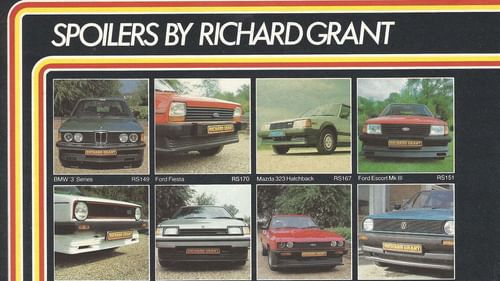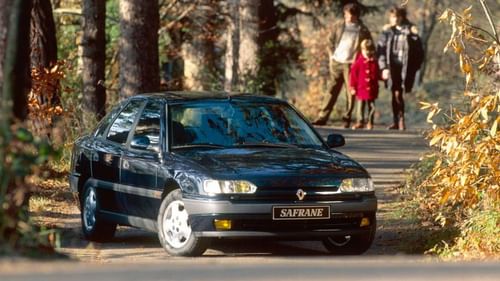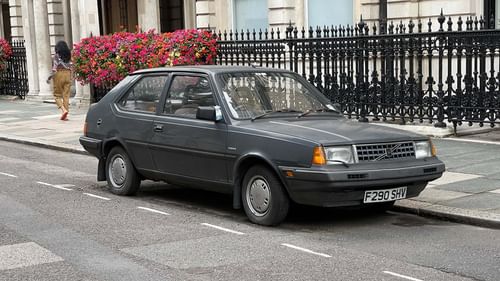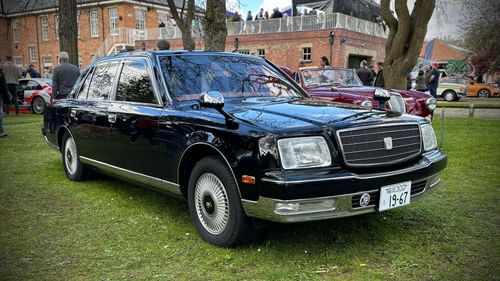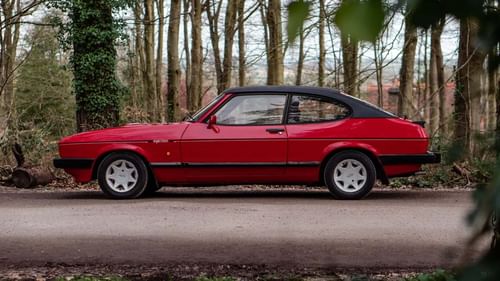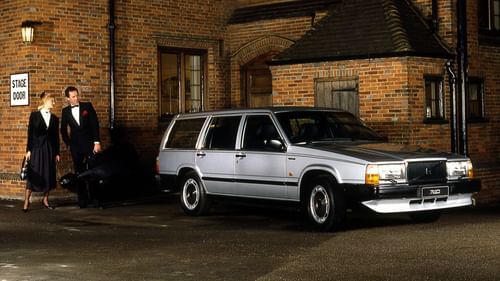An ill-informed history of...the Tripoli Grand Prix
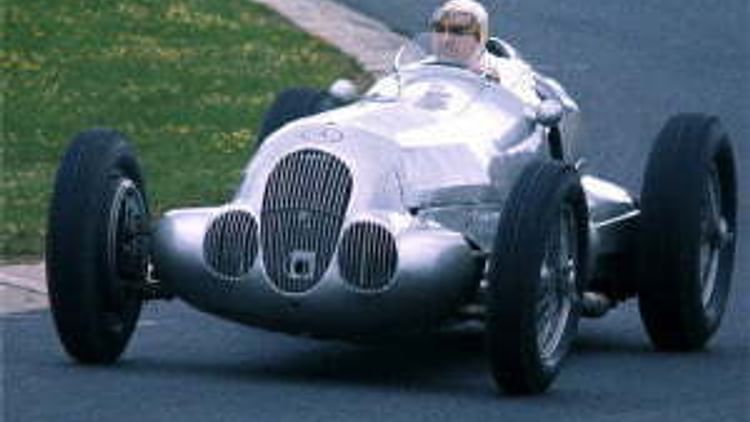
Tom Richards is back on PetrolBlog with one of his 'ill-informed histories'. The subject matter is a rather fascinating look back at the Tripoli Grand Prix, an event that had its fair share of drama during its all too brief period of fame. Tom ends his piece with a heartfelt plea to a certain Mr Ecclestone to remove the Singapore Grand Prix from the F1 calendar and start talking to the Libyans. Bernie, if you're listening, listen to the man. Without further ado, I'll let Tom take over...
As I write this, I am settling down to watch the Singapore Grand Prix, and I’m not entirely sure why. Aside from one particular crash – a well-documented affair involving Nelson Piquet Jr. and a tubby, orange, open-shirted man from Italy – Singapore ends up being little more than a procession, the only overtaking invariably revolving around leapfrog manoeuvres in the pit-lane.
Races weren’t always like this, though. Singapore is merely one in a very long line of exotic Formula One races, taking place in far-flung locations around the globe. I was, however, just a little surprised to discover that one of F1’s most exotic, interesting locations from the pre-war period was Italian Tripolitania – or Libya, as you’ll know it today.
And, after a rather slow start, it sounded like rather a wonderful location, too.
The first Grand Prix took place in Tripoli in 1925. And, rather like Singapore, it catastrophically failed to captivate the audience’s imagination, with a slow, technical circuit that provided few opportunities for overtaking.
 After the initial buzz of the first two years, the event began to struggle for money. The 1929 race almost didn’t take place were it not for the intervention of the region’s governor, an Italian General and keen motorsport fan by the name of Emilio de Bono, who managed to persuade sponsors to continue to back the event.
After the initial buzz of the first two years, the event began to struggle for money. The 1929 race almost didn’t take place were it not for the intervention of the region’s governor, an Italian General and keen motorsport fan by the name of Emilio de Bono, who managed to persuade sponsors to continue to back the event.
In 1930, however, the Grand Prix continued down the seemingly inevitable road of decline, as an ever-shrinking field of competitors and lack of cash left the public looking around for something else to do on their race weekends. Watch the Rugby World Cup, probably. Or the X-Factor. Funnily enough, there was no Tripoli Grand Prix in 1931 and 1932.
Unwilling to let the race vanish from the Grand Prix schedule completely, Edigio Sforzini – the president of the Automobile Club di Tripoli – arranged another race, this time with the support of Il Duce, Benito Mussolini. The world’s second most famous fascist was determined to make it one of motorsport’s jewels, a European-style track to compete with the likes of the Nürburgring and Montlhéry.
Over eight miles in length, the new Mellaha Lake circuit was all sweeping curves and fast straights, a grandstand to seat 10,000 spectators, custom-built pit garages and a shiny new control tower in a shade of white that would turn David Coulthard’s trousers pink with inadequacy. The new circuit was, in a word, remarkable.
It wasn’t just the new circuit that impressed, however. Determined not to allow the event to falter and fail like last time, the organisers arranged a national lottery to celebrate the reintroduction of the event. Buy a ticket for 12 lire and you’d be in with a chance of winning a whole lot more. Perhaps unsurprisingly, they sold almost 1.5 million tickets in the run-up to the race.
There was one minor problem with this lottery, however, and it was the time between the draw and the race itself – it gave opportunistic prize winners the chance to cause trouble. In the first year, the first race was stitched up in spectacular fashion, as one of the lottery winners, a timber merchant from Pisa called Enrico Rivio, arranged to share his winnings with the leading rivals in return for his preferred result.
 Bugatti driver Achille Varzi took first place, a result that many had not thought possible at the time. With so many of motorsport’s top drivers implicated in the affair (including Tazio Nuvolari, Italian racing idol and, at the time, Maserati driver), it was swept under the carpet to avoid the kind of scandal that had the potential to bring down, say, Flavio Briatore. At Singapore. In the following years, the draw took place only minutes before the race start, thus removing this particular sporting obstacle.
Bugatti driver Achille Varzi took first place, a result that many had not thought possible at the time. With so many of motorsport’s top drivers implicated in the affair (including Tazio Nuvolari, Italian racing idol and, at the time, Maserati driver), it was swept under the carpet to avoid the kind of scandal that had the potential to bring down, say, Flavio Briatore. At Singapore. In the following years, the draw took place only minutes before the race start, thus removing this particular sporting obstacle.
Aside from 1933, though, Tripoli seemed to be immensely popular among spectators and drivers. Crowds kept on getting larger and larger over the years, as they fought to see the world’s greatest racers, those from Scuderia Ferrari, Maserati and Germany’s perennially dominant Silver Arrows.
Drivers were able to attack much of the course at full speed, and spectators, whether in the grandstand or lining the dusty circuit, were treated to some of the most dramatic wheel-to-wheel racing of this era. Back then, the Mellaha Lake circuit was the fastest track in the world.
 Results didn’t quite work out the way that the Italian organisers had hoped, however, with the Germans dominating the leader boards in the late 1930s. The Silver Arrows, Germany’s all-powerful Auto Union and Mercedes-Benz Grand Prix teams, won every Tripoli Grand Prix from 1934 to 1939, with Mercedes-Benz taking the lion’s share of the victories.
Results didn’t quite work out the way that the Italian organisers had hoped, however, with the Germans dominating the leader boards in the late 1930s. The Silver Arrows, Germany’s all-powerful Auto Union and Mercedes-Benz Grand Prix teams, won every Tripoli Grand Prix from 1934 to 1939, with Mercedes-Benz taking the lion’s share of the victories.
1940 was the last Grand Prix ever to take place on Libyan soil, however. It was a final, dramatic victory for the Italians, as Alfa driver Giuseppe Farina finally wrested the top place on the podium from the Germans. A victory in no way diminished by the fact that many of Germany’s star drivers had already died in the war.
With any luck, the Singaporean Grand Prix will be cancelled sooner rather than later, as I always seem to end up watching it with a listless expression on my face. And a little dribble down my front. But Tripoli would, to my mind, be the perfect replacement.
All the Libyans need is a little encouragement, and maybe a cash injection from Bernie, Formula One’s very own home-grown dictator. They’d have a circuit faster than Spa, the Mediterranean in the background and absolutely no need to rely on something so gimmicky as a midnight race to draw in the crowds. Yep. I’d watch that.
And I’d actually enjoy it, too.
Silver Arrows image courtesy of Lothar Spurzem
